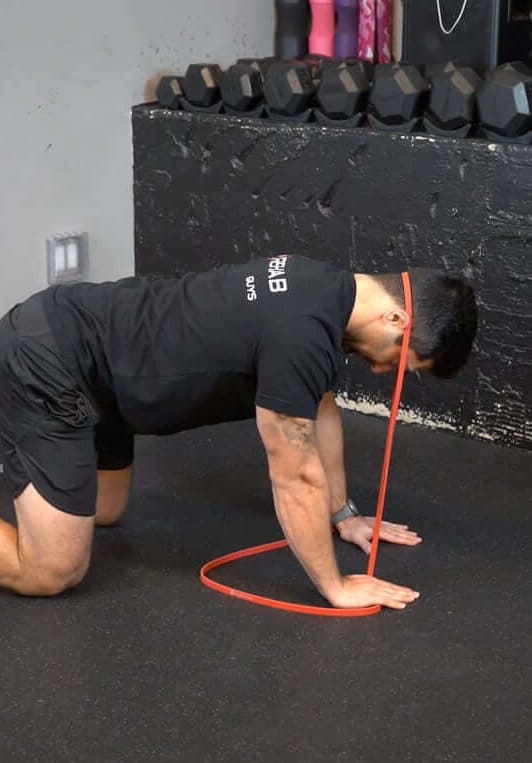
J., “Muscle Pain: Understanding Its Nature, Diagnosis, and Treatment,” Lippincott Williams & Wilkins, 2001.īraun, B. Waikanae,” New Zealand: Spinal Publications, Ltd., 1983.

#MACKENZIE CHIN TUCK MANUAL#
E., “The Effect of Pectoralis Muscle Stretching on the Resting Position of the Scapula in Persons with Varying Degrees of Forward Head/Rounded Shoulder Posture,” Journal of Manual & Manipulative Therapy, Vol. P., “Trial into the Effects of Repeated Neck Retractions in Normal Subjects,” Spine, Vol. C., and Bogduk, N., “The Pathologic Effects of Intrathecal Betamethasone,” Spine, Vol. and Trott, P., “The Association between Cervical Excursion Angles and Cervical Short Flexor Muscle Endurance,” Australian Journal of Physiotherapy, Vol. H., “Cervical Headache: An Investigation of Natural Head Posture and Upper Cervical Flexor Muscle Performance,” Cephalalgia, Vol. Grant, R., “Physical Therapy of the Cervical and Thoracic Spine,” Churchill Livingstone, 1994. A., “Incidence of Common Postural Abnormalities in the Cervical, Shoulder, and Thoracic Regions and their Association with Pain in Two Age Groups of Healthy Subjects,” Physical Therapy, Vol. Griegel-Morris, P., Larson, K., Mueller-Klaus, K., and Oatis, C.

B., and Inanici, F., “Myofascial Pain and Fibromyalgia Syndromes: A Clinical Guide to Diagnosis and Management,” Elsevier Health Sciences, 2001. 87–96, 1995.Ĭailliet, R., “Soft Tissue Pain and Disability (Pain Series),” F a Davis Co, 2nd Ed., pp. Harms-Ringdahl, K., Schüldt, K., and Ekholm, J., “Principles of Prevention of Neck-and-Shoulder Pain,” Scandinavian Journal of Rehabilitation Medicine. K., “Muscles, Testing and Function: With Posture and Pain by Florence Peterson Kendall,” Lippincott Williams & Wilkins, 4th Ed., 1994. This study suggests that inverse dynamics analysis with a subject-specific musculoskeletal model might be useful to estimate the correctional effects of various exercises. From the present analysis, the therapeutic effects of the chin tuck exercise on FHP might be inferred. Average joint forces and torques of the FHP group were approximately 38.0% and 20.2% higher during protraction and 36.1% and 25.3% lower during retraction, respectively, than the NHP group. For the FHP group, average muscle forces were approximately 33% of those of the NHP group. Inverse dynamics analysis was performed for the chin tuck exercise to compare muscle forces, intervertebral joint forces, and torques between the two groups. A motion analysis system was used to obtain the trajectories of the cervical spine during the chin tuck exercise. Kinematic alignment of the cervical spine model of each subject in the FHP group was modified according to the medical images of each subject.

Subjects are divided into two groups: normal head posture (NHP) and FHP.
#MACKENZIE CHIN TUCK SOFTWARE#
The purpose of this research was to understand the biomechanical effect of the chin tuck exercise on FHP, focusing on the major neck extensor muscles splenii and the major flexor muscle with musculoskeletal dynamics analysis software SIMM. There are various correctional exercise methods for forward head posture (FHP) with insufficient scientific criteria for the best choices.


 0 kommentar(er)
0 kommentar(er)
